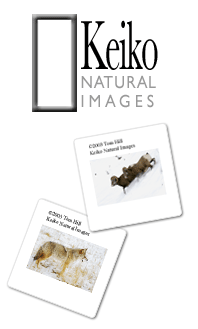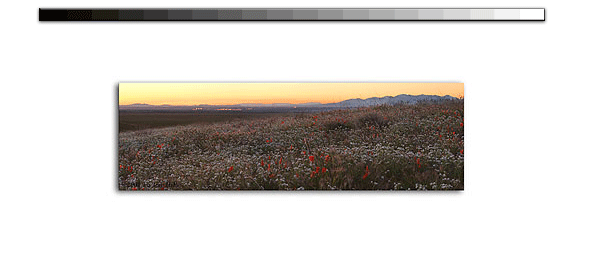|
Notice I haven't said anything about which is more important, technical or artistic. If you're going to be short in one area or strong in the other, what do I recommend? I don't. Both are critical to producing great images. You can't have one without the other. That's what makes photography such a special medium in the art world. The technical aspects are so broad and challenging, you have to master it in order to produce the images. Artistic vision won't cut it alone. I guess most newby's to photography will depend on their camera's auto functions to make the technical aspects that much easier. I guess it does in some ways but mostly, I think it just challenges you in different ways. Knowing your equipment and how to use it with your style of photography is needed. I always find new things I haven't over-come on the technical side. Just when I thought I have an issue conquered, another issue pops up. It's a never ending learning process. Admittedly, the technical aspects are also important to the other forms of art. I assert, they aren't critical to the final product all the time like they are with photography.
Since you can't do without the technical world or without the artistic world, how do you bring it all together. That's where Quality comes in. Quality drives the buss. I think you might presume Quality is the same as being artistic. It's not. Quality comes before art. In other words, you can define good art in terms of knowing Quality. You can't go the other way. The same argument goes with the technical side. You know good techniques by knowing Quality and that's the whole point of this article. Let's talk about Quality a bit.
This whole notion that Quality is the origin of great images isn't something I invented. The concept is fairly well described in "Zen and the Art of Motorcycle Maintenance". While Prising doesn't get into photography in his book, it totally applies. In fact, I think it works better than maintaining a motorcycle. The romantic side of photography--art--is so much stronger than motorcycles. Anyway the issue now is how do you decide when you have good Quality and when you don't. Or, how do you define Quality for our use in producing photographs. You don't! Something has to be at the beginning or else it's a useless circle. Quality, I'm saying, is the beginning. In other words, you know what Quality is through your own experiences and values. It's a part of you like being a human is a part of you. There's no deciding of what's Quality and what's not. You already know so no decision is necessary. So, you may be asking if "I already know, then why is it so hard to make images that make a difference?" That's because you still have to work through the miles of conventional thinking--it's either a technical or artistic problem--before getting to the real answer. In fact, the best way to know what the answer is to have no idea what the answer is. It will come to you without putting any effort into it. No analysis, no nothing. It'll just pop into your head. You won't know where it came from but you'll konw it's the right answer because it'll feel right.
Have you ever been out in the field taking pictures totally frustrated because nothing seems to come together. You're trying to take a landscape image but nothing is coming together no matter how much analysis is being made. Then, at the moment of ultimate frustration and you're about to give up the whole problem, the solution presents itself? Has that ever happened to you in the field? That's Quality coming to the rescue. All the effort trying to find the answer was just delaying the real answer from coming forward. Quality just happens, that's its nature. Analysis doesn't reveal Quality. Quality just occurs.
Fairly unconvention thinking. It works for me. The picture of the Bald Eagle Feeding Frenzy occurred to me while I was shooting this winter in Homer Alaska. The frenzy was on in full swing and I spied this one individual looking a little frazzeled by the whole ruckus--and it was a huge ruckus. It just came to me to avoid the typical isolated portrait shot of this bird that conventional thinking would've required and go for a image that showed the ruckus a bit more--a lot more. It's unconvention but much more satisfying. The idea to shoot this image just "dawned" on me. I have know idea where it came from but it arrived never the less. I suggest you're full of these ideas. It's just a matter of developing the skills to listen to them by weeding out the stuff that doesn't matter.
Which goes to my last point. Most oohs and awwwws of nature images are fairly predictable. The exposure is incredible, there's nothing wrong artistically, the subject is intersting. All together, fairly tame stuff. My issue is group think says those images are the ones that deserve the most attention. They win the blue ribbon. This occurs at the exclusion of other images that were slightly unconventional, not perfectly exposed, or some other interesting avenue taken that didn't produce the typical fair. Yet the unconventional image doesn't receive the accolades the other more tame images did. Which is right? My thrust is if group think believes it's better, it may not be that awesome. My observation is when the same sytle of images are continually given the best marks, other more unconventional images get fewer and fewer. It's human nature to do what other people like best. So, if more people are liking the typical fair, then that must be the right thing. The problem is this kind of thinking kills innovation which is something no one wants. Innovation is the vehicle of quality--that's my idea not Prising's. Without innovation, we might as well just sell the photography equipment and take up basket weaving. Innovation is everything to me otherwise we always see the same images time and time again. How does quality fit with this problem? By definition, quality promotes innovation. Quality images are new and different every single time. They aren't matches of what's already been produced. So, next time you see a image that isn't the typcial fair, give it a second look. You may see more in the image the second time around.
I hope this logic flow wasn't too confusing. I spent four days--of murderous driving--formulating this train of thought. Though I'm talking about photography, you can use it for practically anything else. But, I'm not because that would be beyond the scope of this website. The bottom-line. Think Quality.
Cheers
Tom
11 July 2001
|
|
|




